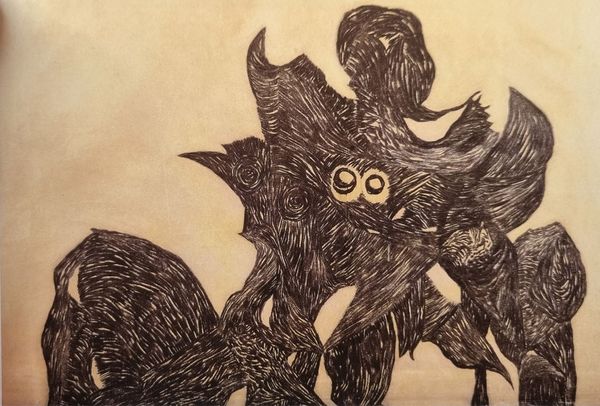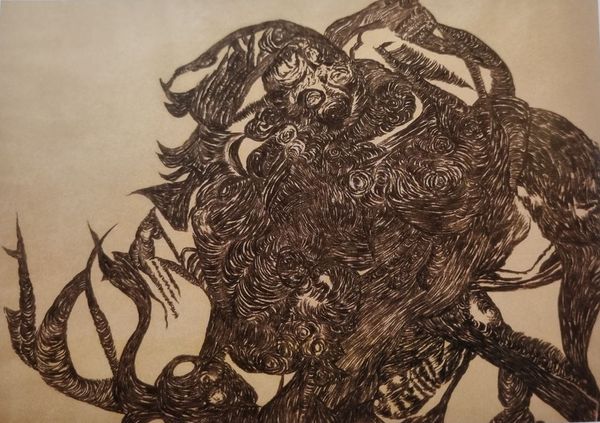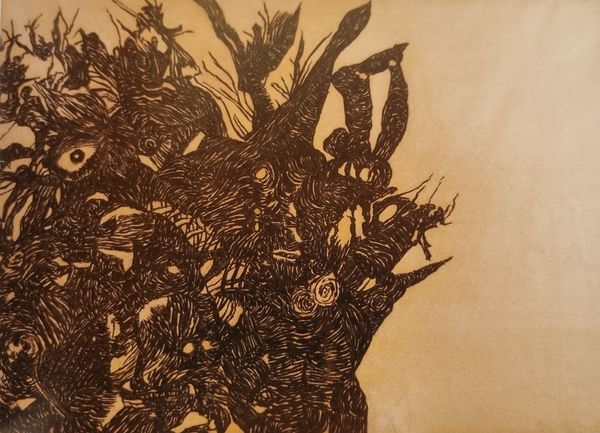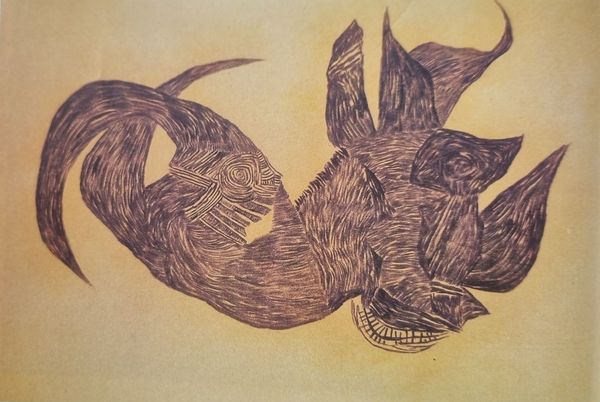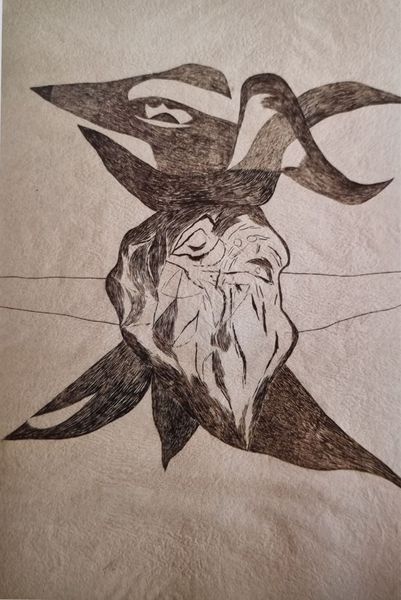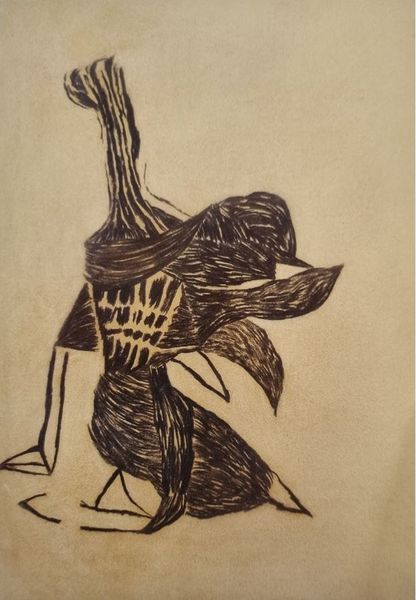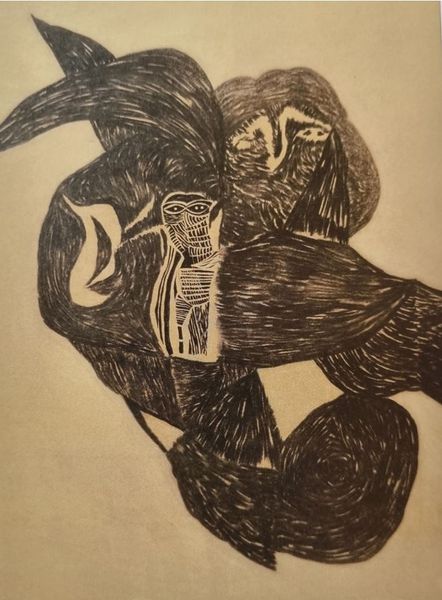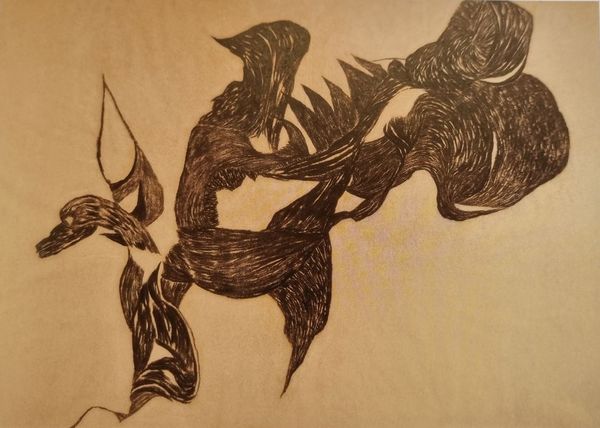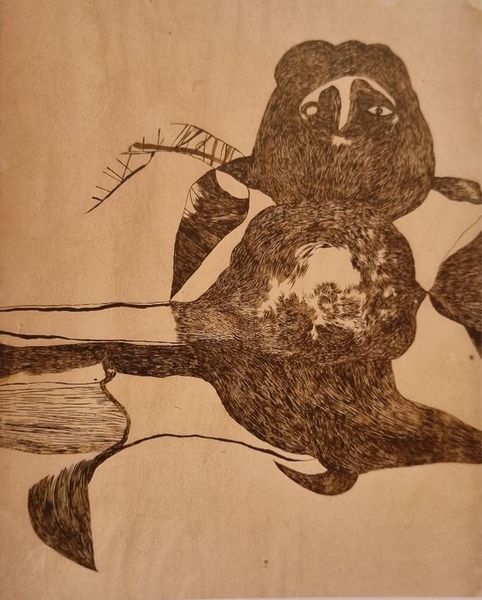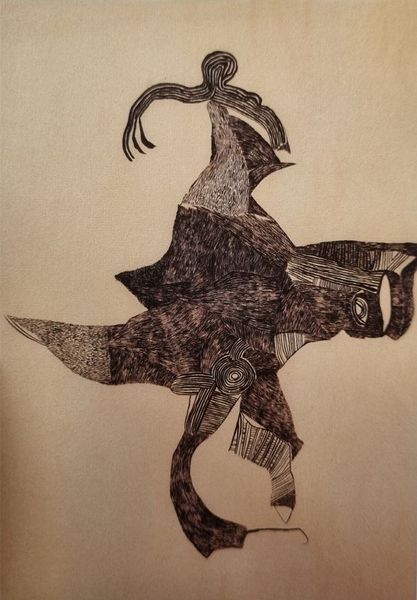
drawing, ink
#
abstract-expressionism
#
drawing
#
ink drawing
#
ink
#
geometric
#
abstraction
#
line
Copyright: Public domain
Curator: Alright, let's talk about Vajda Lajos’ “Eye with Roots,” created in 1940. It's a striking piece done with ink on paper, and fairly large at 90 by 126 centimeters. Editor: My first impression? It feels primal, almost like staring into the soul of something ancient. There's a rawness that gets under my skin. And unsettling...in a way I kind of enjoy? Curator: Yes, "unsettling" captures it perfectly. Looking at the physical composition, you can see how Vajda builds the image using intensely worked lines. The eye is really the focal point, embedded in this web of what appears to be roots. We are seeing an engagement with material and form, where mark-making constructs meaning through the very act of its application. The paper is the bedrock, upon which he layers intention. Editor: It's a landscape of anxieties, no? I mean, those roots—are they anchoring the eye, or are they strangling it? Thinking about the historical context, 1940, with Hungary on the brink of war...it's hard not to see that tension reflected here. And I'm really focused on Vajda's choice of what appear to be quite simple materials. Did that somehow level his engagement with society or the war, or perhaps act as his own materialist method of engagement in practice and subject? Curator: Absolutely. Consider how abstraction was employed as a kind of visual language during the time. To me, Vajda’s practice represents a retreat inwards, and perhaps an urgent investigation into the self amidst external chaos. The roots, you could argue, connect him to a deeper sense of identity, even as the eye remains vulnerable, exposed. Editor: Well, I would counter that this might have been less of a withdrawal and more an exploration of the available materials at the time. War rationing might have forced him to create under restrictions of supply. And it is perhaps the raw quality of the cheap inks and paper he chose which so viscerally communicated anxieties. Curator: A convincing argument indeed. Perhaps it's that combination of intentionality and material reality that makes it so potent. Editor: In either case, I think focusing on materiality really reveals something significant about this artwork's origins. Curator: Ultimately, whether interpreted as an exploration or restriction, "Eye with Roots" challenges us to confront our own perspectives. What we value, what we cling to and how it is composed is all left on the artist to consider, in an intimate revealing of thought processes and emotion that resonates to this day.
Comments
No comments
Be the first to comment and join the conversation on the ultimate creative platform.
